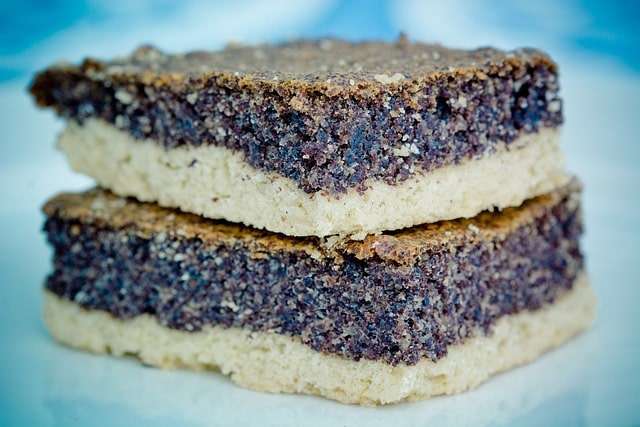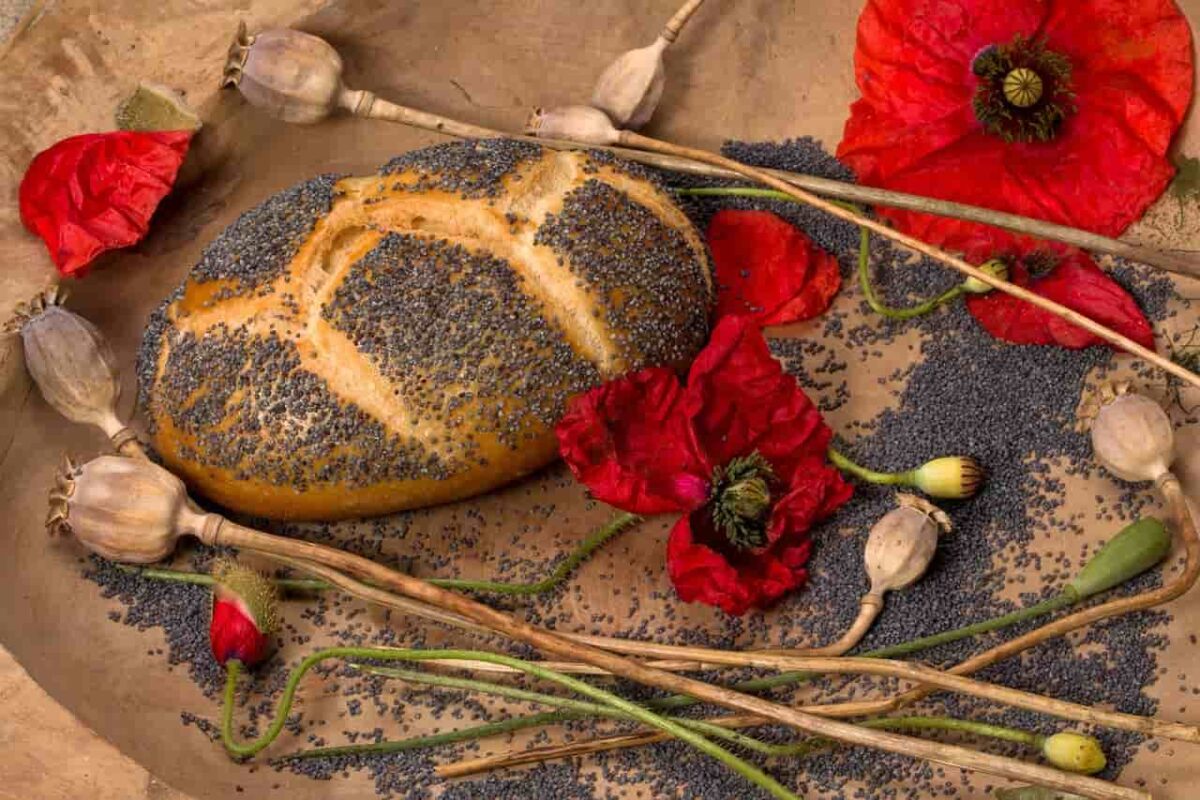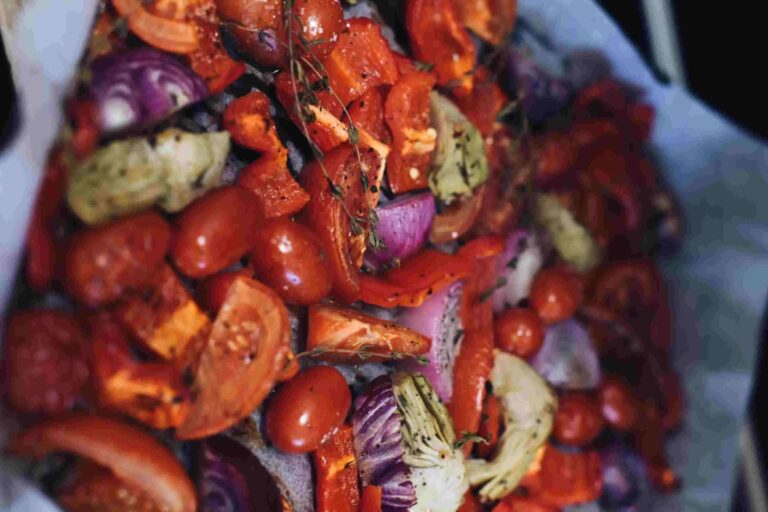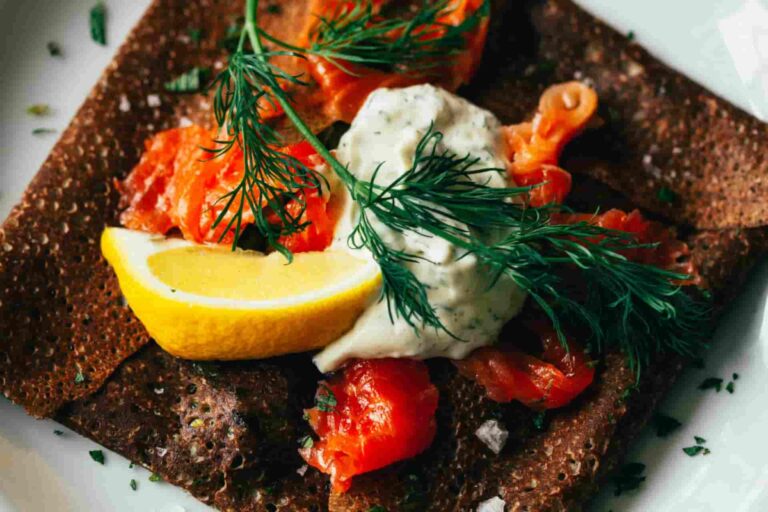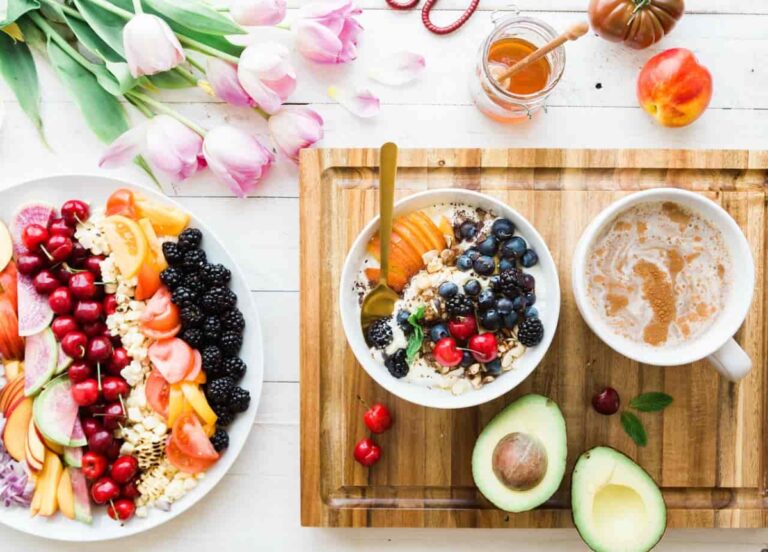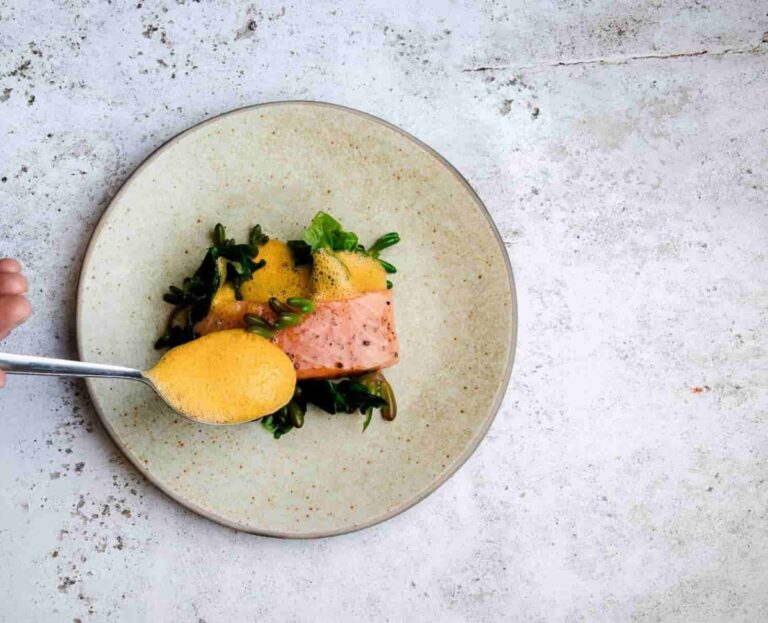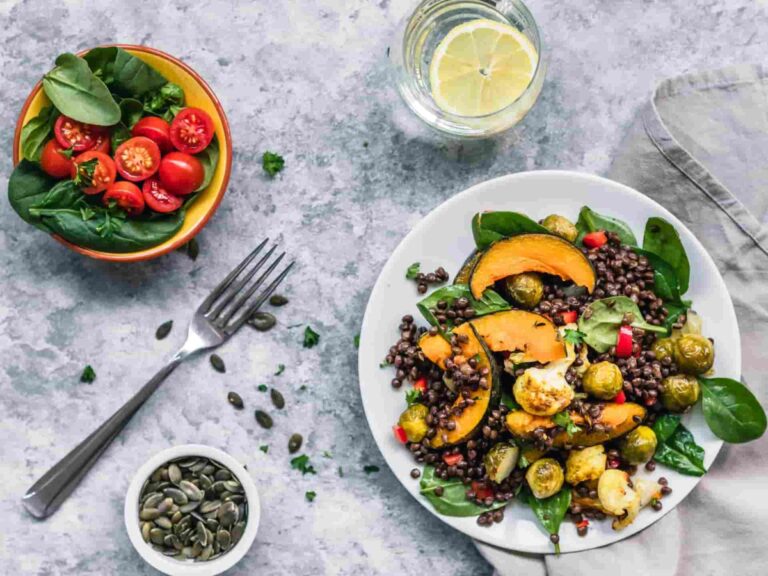Poppy seeds 101-kitchen insights and benefits
Did you know that eating poppy seeds may lead to positive results on drug tests even if they shouldn’t?
- Poppy seeds are prohibited as a food component in China, Taiwan, and Singapore because to the possibility that they may be used to cultivate opium poppies, as well as the possibility that poppy seeds contain traces of the opioid opium, which can be detected in poppy seeds. Due to the presence of these minute quantities of opiate, consuming even a little quantity of food that contains poppy seed might result in an erroneous positive result on a drug test.
- The flower of the poppy plant is known by its scientific name, which translates to “sleep bearing.” Even in The Wizard of Oz, Dorothy was sent to sleep with the help of some poppies. This impact is not brought about by the seed. As early as the first century A.D., poppy seed was used in the culinary industry as a flavouring agent.
- You undoubtedly already know that when the combat in World War I had stopped, fields in Flanders were covered with thousands of poppies, but you may not realise that this was due of the debris that had been left behind during artillery bombardments. The lime that was present in the broken brickwork served as an excellent fertiliser for the poppies. In a few years, after the plants had used up all of the lime that was available, the poppies were almost completely eradicated.
- While the majority of people are familiar with poppies because of its connection to World War I and World War II, the flower has long been associated with young men passing away at an early age, particularly in poetry that reflect on conflict. Homer used the analogy of a “full-blown poppy, overcharged with rain” to depict the passing of a young Trojan prince in The Iliad. The prince’s body was said to have fallen to the earth like an overcharged poppy.
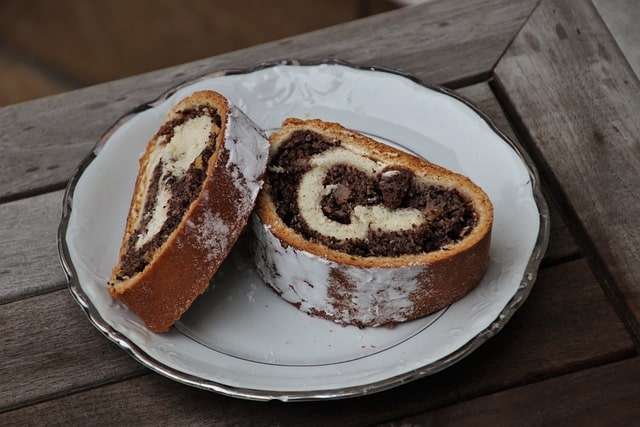
Poppy seeds nutrition and health benefits facts
- Similar to other types of seeds, poppy seeds have a high concentration of dietary fibre, plant lipids, and a wide range of other essential elements. Poppy seeds include a particularly high concentration of the trace element manganese, which is important for maintaining bone health and proper blood coagulation.
- In addition to this, they have a high concentration of copper, which is a mineral that is essential to the development of connective tissue and the transportation of iron.
- Poppy seed oil is produced using a process called cold pressing, and it is notable for the high levels of omega-6 and omega-9 fats that it contains. In addition to this, it has very low quantities of the omega-3 fatty acid known as alpha-linolenic acid (ALA). According to the findings of most studies, diets that are rich in these fats are beneficial to one’s overall health and lower one’s chance of developing heart disease.
- Yet, there is some evidence to suggest that diets high in omega-6 fatty acids may be linked to an increased risk of inflammation and disease. Because of this, you should try to limit the amount of poppy seed oil and other oils that are high in omega-6 that you consume on a daily basis.
- Last but not least, both the seeds and the oil of the poppy plant have a high concentration of polyphenols. Polyphenols are a kind of antioxidant that may help lower the risk of acquiring diseases such as heart disease.
- Morphine, codeine, thebaine, and several other opium alkaloids may be found in the poppy plant. These opiates are well-known for their analgesic, sedative, and calming effects, and they can also help induce sleep. These compounds are often discovered in medications that have been developed specifically for these functions.
- Unrinsed poppy seeds provide a variety of potential health risks, the most severe of which is the possibility of unintended suffocation or death. Due to this fact, they should never be consumed without the supervision of a qualified medical professional.
- There is a significant concentration of monounsaturated and polyunsaturated fats in poppy seed oil, both of which may be beneficial to the health of your skin and heart. Recent studies have shown that diets that are rich in unsaturated fats may help reduce the chance of having a heart attack or stroke by as much as 17%. It is possible that switching the lipids in your diet from saturated to unsaturated might have significant health benefits.
- It is important to keep in mind that diets that are high in omega-6 fatty acids but low in omega-3 fatty acids may increase the risk of inflammation and sickness in the body. As a result of this, it could be a good idea to steer clear of consuming significant amounts of omega-6-rich oils on a regular basis, particularly poppy seed oil.
- Further research shows that the lipids found in poppy seed oil, when applied directly to the skin, may assist in the healing of wounds and prevent scaly sores from developing. Nonetheless, further research is necessary.
- Poppy seeds are often lauded for their extra benefits, which include easing digestive discomfort, promoting healthier skin and hair, and relieving symptoms of asthma, headaches, and coughs. Even though there are not many direct studies on the topic, there is some evidence from research that shows particular minerals and compounds found in poppy seeds may be responsible for some of the positive effects.
- Poppy seeds are often considered to be harmless when they are purchased from reliable sources and when they are ingested in little quantities, such as those that are found in baked goods or bagels.
- Opioid compounds, which are found in poppy latex, are well-known for the sedative effect they have on humans. As a direct result of this, there are many who believe that drinking poppy tea or warming milk that has been flavoured with poppy seeds is an effective natural treatment for insomnia.
100g of poppy seeds has 525 calories (2196kj), 18g protein, 42g fat, and 28g carbs, including 20g fibre.
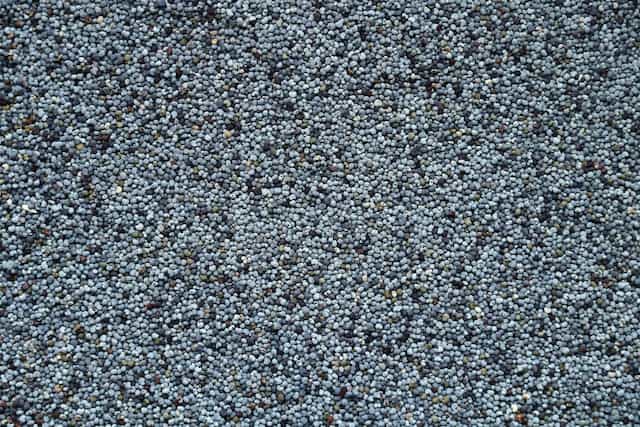
How to store poppy seeds and how to buy them
- Poppy seeds, like the vast majority of food items, have certain storage requirements in order to maintain their quality. Poppy seeds that are sold commercially often have “best before” dates; but, if you store them appropriately, they have a shelf life of several years. If you keep them in the refrigerator, however, their quality will be preserved for an additional one to two years beyond the normal three to four years that they may be kept at room temperature.
- If the container of your poppy seeds has a label that includes a “best by” date, this indicates that the manufacturer wants you to eat the poppy seeds within the allotted time frame so that you may enjoy the seeds at their highest possible quality. Nonetheless, it is absolutely fine to use poppy seeds even after the best before date has passed, as long as the container has been stored correctly and the packaging has not been broken.
- The following are some procedures that may be taken to ensure that the taste and potency of poppy seeds are preserved while also maximising their shelf life:
- Place the poppy seeds in an area of your pantry that is cool and out of the way.
- Always store it where it will not be exposed to direct sunshine or heat.
- Put them away in a container that will not let air in.
- Maintain a dry environment around them.
- Poppy seeds should be kept in the refrigerator in an airtight jar or container to ensure that their distinctive nutty taste is maintained for as long as possible.
- When it comes to poppy seeds, the shelf life might vary depending on the kind. For example, because poppy seeds are able to maintain their freshness and flavour for many years, an unopened box of them will have a longer shelf life than an opened one. If you want your poppy seeds to have the longest possible shelf life, purchasing them in a professionally sealed packet is your best bet. Poppy seeds have a tendency to lose their potency with time, despite the fact that their quality may be preserved for years. You will also detect a drop in their tastes, which is not the taste that gourmands often associate with poppy seeds in the best of circumstances.
- The following is a list of symptoms that may point to the fact that your poppy seeds have become spoiled and should not be consumed:
- Make a coarse powder using your hands using some poppy seeds. One of the most effective methods for determining whether or not poppy seeds are of poor quality is to rub or crush a couple of them in the palm of your hand. If they have an odd odour or hardly any scent at all, it is advisable to get rid of them and not keep them in your kitchen.
- Weak flavour. Poppy seeds, as we discussed earlier, have their own unique flavours; nevertheless, if the poppy seeds you have kept in your kitchen have a flavour that is different from the nutty flavour that is often associated with them, it is best to replace them with fresh poppy seeds.
- Moulds and discoloration are present. The colour of poppy seeds is a charcoal grey. If you see any discoloration or moulds forming over the surface, it is recommended that you get them changed as soon as possible.
- Taste that is sour or rotten. Because of the considerable amount of oil that they contain, poppy seeds may rapidly go rancid. If your poppy seeds have a rancid or stale flavour, it is best to get rid of them and start again.
- Although while consuming a small number of tainted poppy seeds will not put your health in danger, the taste may leave a bitter aftertaste, which is often not the flavour that is associated with poppy seeds.
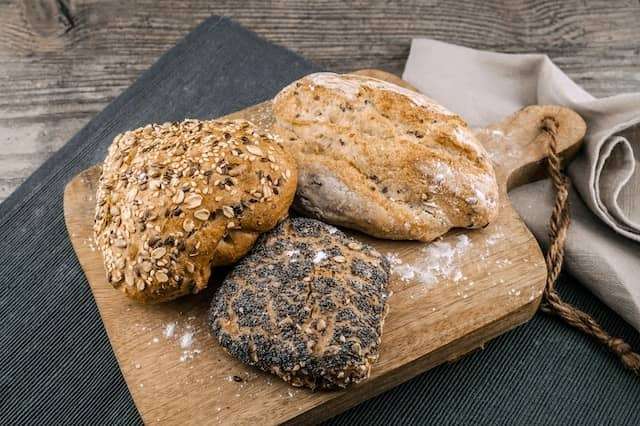
Cooking techniques, secrets, and tips from the kitchen
- The same plant, papaver Somniferum, yields both white poppy seeds and black or blue poppy seeds. Because of the extensive use of poppy seeds in Indian cuisine as a thickening ingredient in curries and other Indian foods, the milder kind of poppy seeds is sometimes referred to as Indian poppy seeds.
- In Europe, the equivalent would be black or blue poppy seeds. The nuts are used in confectionery and baking, such as breads and desserts, and are more robust and nuttier than almonds. When it comes to the taste and function of poppy seeds, you may easily substitute one for the other. Poppy seeds taste much like chia seeds; they are mild with a somewhat sweet aftertaste. When roasted, they take on a somewhat nutty taste.
- Poppy seeds are large and have a texture similar to sand, which might make it challenging to grind them into a paste. Indian families historically utilised a stone grinder to manually process a wide range of materials into pastes. Cutting-edge equipment like grinders used in today’s kitchens has made this process considerably easier. Yet, it is not exactly a walk in the park to prepare poppy seed paste. The seeds need to be soaked for 30 minutes in warm water before being ground. You may also make a paste by grinding the seeds into a powder without adding any water.
- Consumption of poppy seeds is associated with a good future, hence they are often included in Eastern European baking. Numerous recipes call for these tiny seeds, but the Polish makowiec, which is made with thinly sliced seeds and served with sour cream, is particularly iconic and eye-catching. The yeasted dough in this pastry is filled with a tasty poppy seed spread before being rolled and baked; the resulting pastry has a beautiful black and white swirl pattern when cut into slices. There is always one dish that the whole family enjoys preparing together. The flavour should not be very sweet, although some people prefer to add sweeteners like apricots, raisins, honey, or fruit peel to spice things up. It is a common treat to have with a hot beverage like tea or coffee.
- In Bengal, white poppy seeds are a culinary staple that may be found in many different recipes. For example, it may be made into a paste with chopped onions, chilli peppers, mustard oil, and rice, or it can be boiled with potatoes and/or ridge gourd before being consumed. You should also try the Posto Bora, which is a delicious speciality (deep-fried poppy paste). Deep-fried till golden and crisp, it is made with a poppy seed paste flavoured with onion, chilies, mustard oil, and a touch of salt. Poppy seeds are used to thicken the sauce in many dishes, including curries and milk-based desserts.
- The Jewish and Middle Eastern cultures often include them into baked items, desserts, and even pretzel toppings. Traditional Hamantashen are filled with a poppy seed filling that is flavoured with milk, sugar, orange zest, raisins, lemon, brandy, orange liqueur, butter, and vanilla extract and then baked in a tin. It is a delicious snack that stands out from the crowd because to its distinctive rectangular shape.
- When paired with dairy products and spices like cumin, cardamom, and cinnamon, to mention just a few, poppy seeds complement a wide range of flavours very well. Some of these flavours include lemon, mustard, strawberries, almonds, and raisins.
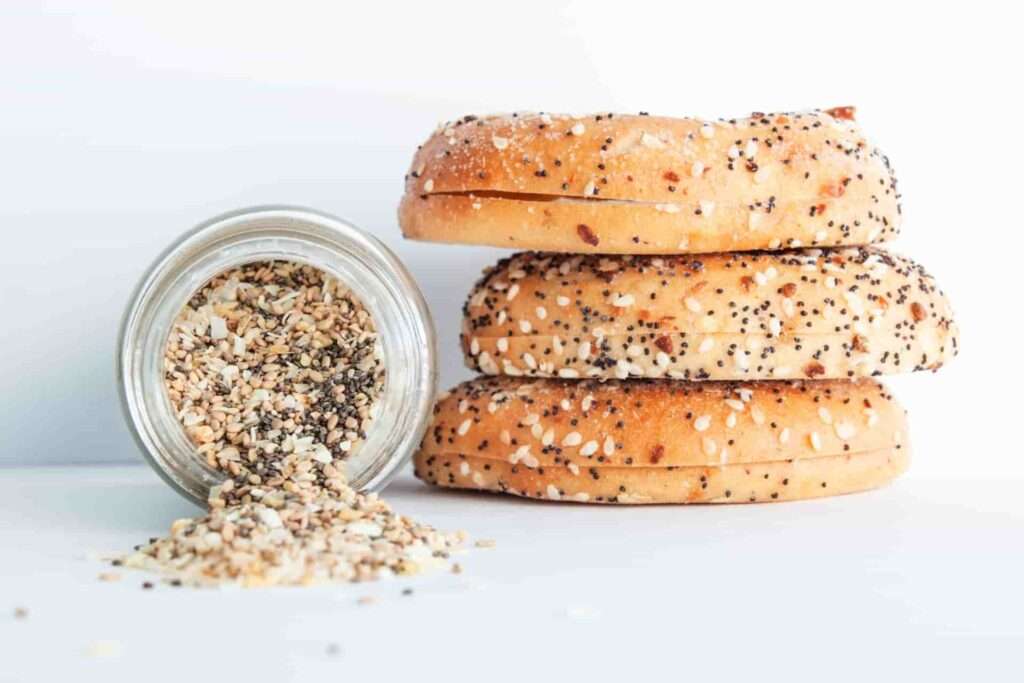
History of poppy seeds from the beginning until today
- Several different cultures’ traditional healing books make mention of the poppy seed. The Ebers Papyrus, an Egyptian papyrus scroll written about 1550 BC, mentions poppy seed as a sedative.
- The Minoan culture existed on the island of Crete between 2700 and 1450 BC. They grew poppies for their seeds and used a mixture of milk, opium, and honey to calm crying infants. The Minoan civilization is often recognised as the pioneering Bronze Age culture. The Sumerians are another civilization that some evidence suggests grew poppies for their seeds.
- The poppy seed colour may make or break an application. According to The Joy of Cooking, the “most desirable” poppy seeds are “slate-blue in hue,” and they come from Holland. Nevertheless, when poppy seeds are used as a thickener in some foods, white poppy seeds are preferred since they do not significantly alter the colour of the food when cooked. Black poppy seeds are preferred for other meals because of the dramatic appearance they have on the plate.
- Blue poppy seeds are used in Polish cooking and in many German baked goods. Poppy seeds, in their whole form, are widely used in and on top of a wide range of baked goods and pastries, both sweet and savoury. Poppy seed muffins, rusk, bagels, and cakes like sponge cake are just few of the foods that go well with them in North America. Poppy seeds may be used in place of sesame seeds in a variety of recipes, including hamburger buns and candy bars.
- Poppy seeds, both black and white, are a common topping for European pastries made with soft white bread, especially buns. The seeds of the Czech blue poppy are a popular snack food in the Czech Republic and across Central and Eastern Europe. Mature seeds are eaten with pasta when pulverised and sweetened, or they are boiled with milk and used as a filling or topping for various sweet pastries and fruit pastries.
- Among the various cuisines that use blue poppy seeds are those of Austria, Croatia, the Czech Republic, Denmark, Germany, Hungary, Latvia, Lithuania, Poland, Romania, Russia, Serbia, Slovakia, Turkey, and Ukraine.
- Flour made from white poppy seeds is used as a thickener in Indian cooking to give dishes additional body, texture, and flavour. While making korma, ground poppy seeds, coconut, and other spices are mixed into a paste and added to the pot. The cuisines of the Punjab and Rajasthan, two major regions of India, both include extensive use of poppy seeds.
